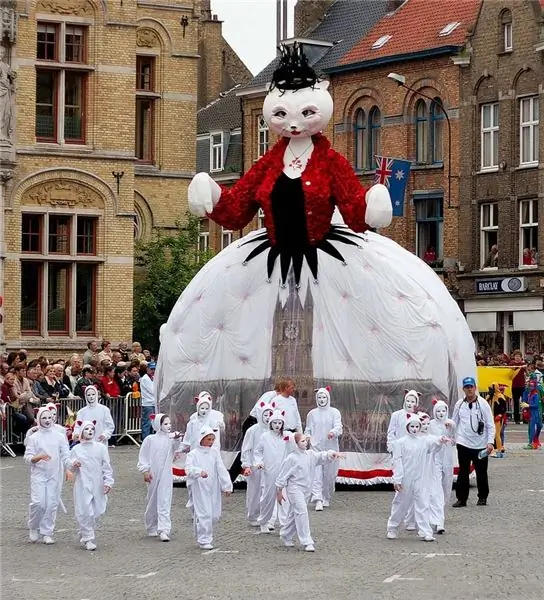
Every year in Belgium, about two thousand different holidays are held, for which there are a great many reasons. Holidays in Belgium are distinguished by their brightness and originality, as you will see now.
Ommegang Festival
The Ommegang festival takes place on the streets of the capital and belongs to the category of folklore holidays. The Belgians begin their celebrations on June 30th and end at midnight on July 2nd.
The history of the holiday goes back several centuries. In the first mention in 1359, Ommegang appears as a religious procession and only after two centuries does it become a national holiday. Over time, the religious basis was completely forgotten, and the event itself was transformed into a fabulous carnival.
Then the holiday was forgotten for some time, but in 1930 it began to play with new colors. These days, the main square of Brussels turns into a huge medieval village. Walking along it is allowed only if you are dressed appropriately, namely, in a costume of the 16th century.
Dudu holiday
The small town of Mons becomes the place of celebration. The celebration falls on the day of Trinity and lasts 7 days. The holiday is a symbol of the victory over the plague that raged across Europe in the Middle Ages. Dudu was first held in 1349, when the plague came to Mons. Then they decided to drive the disease out of the city, walking through its streets in a religious procession. A miracle happened - the plague disappeared, and processions were held annually, in memory of this.
At the end of the century, elements of the theater were added to the celebration. It was from that time that the tradition of reproducing the battle of St. George with the dragon appeared. The performance is a carefully rehearsed act, so it looks very impressive.
Carnival in Binche
One of the brightest festivals that you can get to while traveling around the country. It is only one position behind the famous Venice Festival, being the second most popular. Carnival takes place before the beginning of Lent and does not have a specific date.
On the first day, you are given the opportunity to participate in a theatrical performance, walking through the streets of the city in a beautiful carnival costume.
The second day is a youth holiday. Young people are divided into groups according to their political views, and then they dance in circles in the main square of the city. At nightfall, colorful fireworks are launched into the sky near the station.
The third day of the carnival traditionally belongs to Gilles. People dress in national clothes, and their faces are covered with wax masks. Then, in friendly columns, the mummers set off to the city administration, having fun on the way by throwing oranges into the crowd of spectators. By the way, catching such an orange sweet ball is considered a great success.






